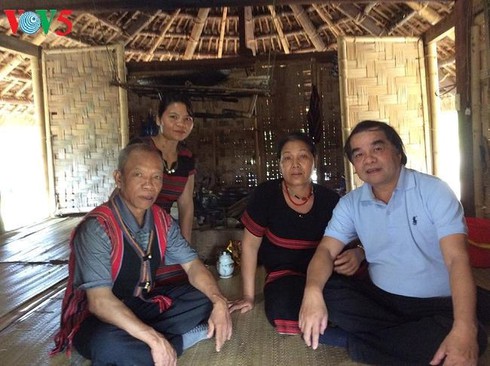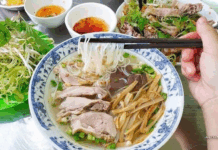The Pa Ko group includes about 50,000 people, living in the Huong Hoa and Dakrong districts of Quang Tri province and in the A Luoi district of Thua Thien-Hue. They live commingling with the Co Tu, Ta Oi, and Van Kieu and share many similarities in production and costumes.
But the Pa Ko have their own language which they use to retell stories of their history.
Ho Van Hanh, patriarch of Pa Ko hamlet in Hong Trung commune, A Luoi district, said “Legends say that the Pa Ko ancestors didn’t live in the Truong Son range but on the plain of Thua Thien-Hue province. The Pa Ko lost in a citadel building contest and had to move to the mountains. The Pa Ko living in multiple places have maintained their customs.”
The Pa Ko, whose name means “the people of the mountains”, live in hamlets of 5 to 10 stilt houses made of wood, bamboo, and leaves. People in a hamlet belong to the same clan. A long stilt house has partitions to separate the living space of several households.
The houses are built surrounding a large field which is the center of the village. There they plant a tall pillar which is decorated as a Neu tree at festivals. Community activities are held in the field, which is large enough for an elephant race and all the villagers who gather for their elephant worshipping ritual. The elephant is an important animal to the Pa Ko. It reflects the prosperity of a family or clan.
Patriarch Ho Van Hanh said “In the past every Pa Ko village had tamed elephants. We prefer to build our villages on high, sloping land, which is good for taming elephants. During the national resistance wars, the Pa Ko used elephants to transport goods, weapons, and medicines.”
The Pa Ko have many religious festivals, such as a guarding the terraced field ceremony, a crop festival, and a grave exhumation ceremony.
The crop festival asks the genies to bless all families with peace, health, and good crops, while the grave exhumation ceremony prays for the salvation of the souls of deceased people and a happy life for the living. The Pa Ko rebuild their ancestral tombs every 5 to 7 years.




